Qunbi Zhuge
Multidimensional Voronoi Constellations vs. Short Blocklength Probabilistic Shaping: A Comparison for Multilevel Coding Approach
Sep 30, 2024



Abstract:Performance of concatenated multilevel coding with probabilistic shaping (PS) and Voronoi constellations (VCs) is analysed over AWGN channel. Numerical results show that VCs provide up to 1.3 dB SNR gains over PS-QAM with CCDM blocklength of 200.
Preamble Design for Joint Frame Synchronization, Frequency Offset Estimation, and Channel Estimation in Upstream Burst-mode Detection of Coherent PONs
Sep 22, 2024Abstract:Coherent optics has demonstrated significant potential as a viable solution for achieving 100 Gb/s and higher speeds in single-wavelength passive optical networks (PON). However, upstream burst-mode coherent detection is a major challenge when adopting coherent optics in access networks. To accelerate digital signal processing (DSP) convergence with a minimal preamble length, we propose a novel burst-mode preamble design based on a constant amplitude zero auto-correlation sequence. This design facilitates comprehensive estimation of linear channel effects in the frequency domain, including polarization state rotation, differential group delay, chromatic dispersion, and polarization-dependent loss, providing overall system response information for channel equalization pre-convergence. Additionally, this preamble utilizes the same training unit to jointly achieve three key DSP functions: frame synchronization, frequency offset estimation, and channel estimation. This integration contributes to a significant reduction in the preamble length. The feasibility of the proposed preamble with a length of 272 symbols and corresponding DSP was experimentally verified in a 15 Gbaud coherent system using dual-polarization 16 quadrature amplitude modulation. The experimental results based on this scheme showed a superior performance of the convergence acceleration.
Dual-Tap Optical-Digital Feedforward Equalization Enabling High-Speed Optical Transmission in IM/DD Systems
Feb 02, 2024Abstract:Intensity-modulation and direct-detection (IM/DD) transmission is widely adopted for high-speed optical transmission scenarios due to its cost-effectiveness and simplicity. However, as the data rate increases, the fiber chromatic dispersion (CD) would induce a serious power fading effect, and direct detection could generate inter-symbol interference (ISI). Moreover, the ISI becomes more severe with the increase of fiber length, thereby highly restricting the transmission distance of IM/DD systems. This paper proposes a dual-tap optical-digital feedforward equalization (DT-ODFE) scheme, which could effectively compensate for CD-induced power fading while maintaining low cost and simplicity. A theoretical channel response is formulated for IM/DD transmission, incorporating a dual-tap optical equalizer, and the theoretical analysis reveals that for an IM/DD transmission using 1371nm over 10km standard single-mode fiber (SSMF), frequency notch is removed from 33.7GHz to 46GHz. Simulation results show that the DT- ODFE achieves an SNR gain of 2.3dB over IM/DD systems with symbol-space feedforward equalizer (FFE) alone. As the fiber length increases to 15 km, DT- ODFE performs well, while FFE, decision-feedback equalizer (DFE) and Volterra nonlinear equalizers (VNLE) all fail to compensate for the power fading and the 7% hard-decision FEC limit is not satisfied. For 200 Gb/s/$\lambda$ PAM-4 over 15km SSMF, results show that the signal-to-noise ratio (SNR) of the proposed DT- ODFE with optimal coefficients satisfies the 7% hard-decision FEC limit, which uncovers the great potential of the DT- ODFE for high-speed IM/DD systems in LR/FR scenarios.
Building a digital twin of EDFA: a grey-box modeling approach
Jul 13, 2023



Abstract:To enable intelligent and self-driving optical networks, high-accuracy physical layer models are required. The dynamic wavelength-dependent gain effects of non-constant-pump erbium-doped fiber amplifiers (EDFAs) remain a crucial problem in terms of modeling, as it determines optical-to-signal noise ratio as well as the magnitude of fiber nonlinearities. Black-box data-driven models have been widely studied, but it requires a large size of data for training and suffers from poor generalizability. In this paper, we derive the gain spectra of EDFAs as a simple univariable linear function, and then based on it we propose a grey-box EDFA gain modeling scheme. Experimental results show that for both automatic gain control (AGC) and automatic power control (APC) EDFAs, our model built with 8 data samples can achieve better performance than the neural network (NN) based model built with 900 data samples, which means the required data size for modeling can be reduced by at least two orders of magnitude. Moreover, in the experiment the proposed model demonstrates superior generalizability to unseen scenarios since it is based on the underlying physics of EDFAs. The results indicate that building a customized digital twin of each EDFA in optical networks become feasible, which is essential especially for next generation multi-band network operations.
Multicarrier Modulation-Based Digital Radio-over-Fibre System Achieving Unequal Bit Protection with Over 10 dB SNR Gain
Jul 04, 2023


Abstract:We propose a multicarrier modulation-based digital radio-over-fibre system achieving unequal bit protection by bit and power allocation for subcarriers. A theoretical SNR gain of 16.1 dB is obtained in the AWGN channel and the simulation results show a 13.5 dB gain in the bandwidth-limited case.
A Grey-box Launch-profile Aware Model for C+L Band Raman Amplification
Jun 24, 2022
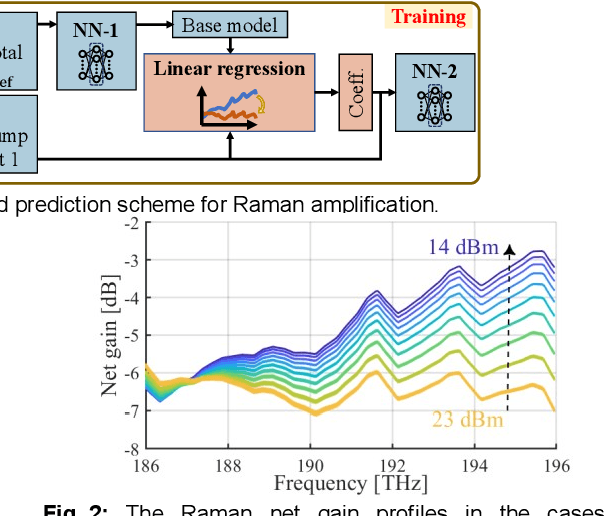
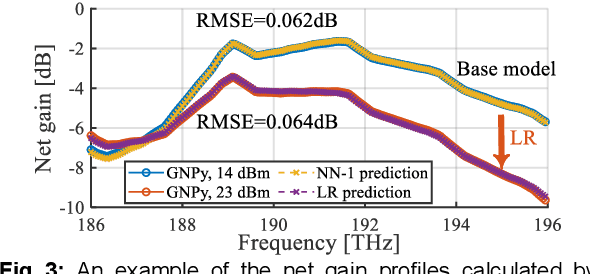
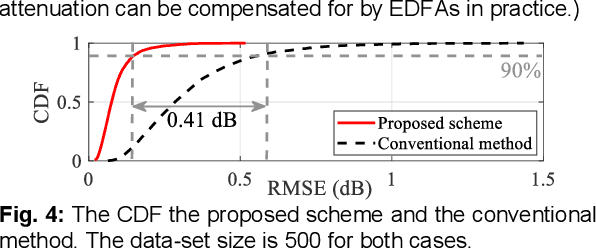
Abstract:Based on the physical features of Raman amplification, we propose a three-step modelling scheme based on neural networks (NN) and linear regression. Higher accuracy, less data requirements and lower computational complexity are demonstrated through simulations compared with the pure NN-based method.
Physics-informed EDFA Gain Model Based on Active Learning
Jun 13, 2022
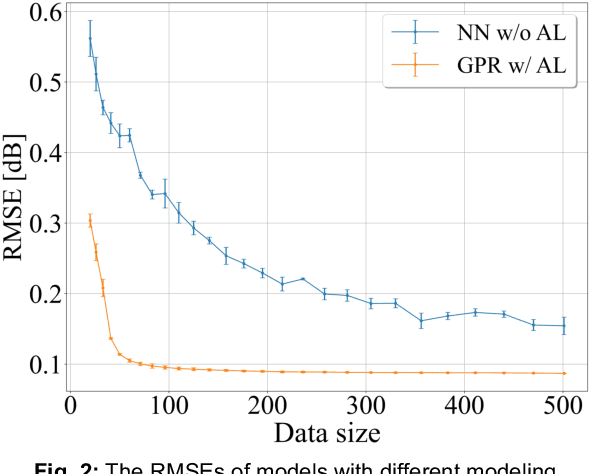
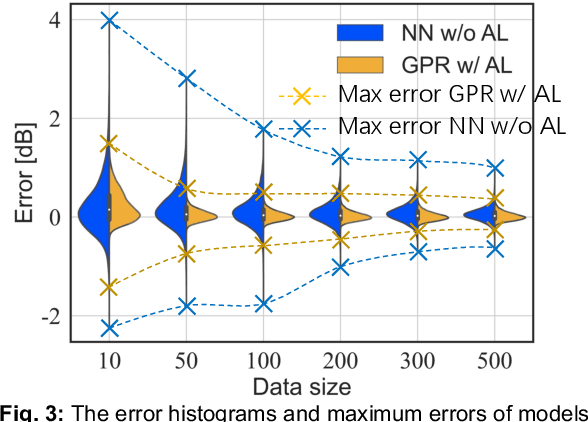
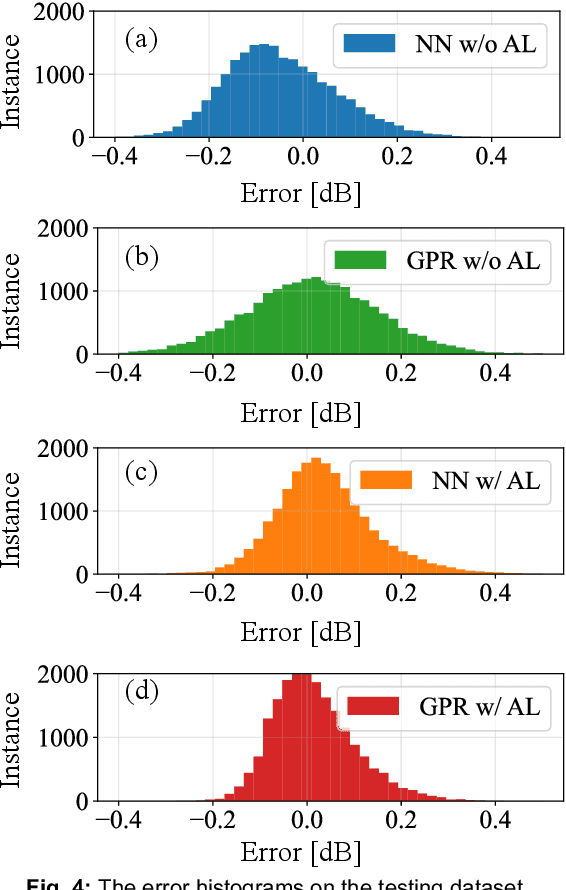
Abstract:We propose a physics-informed EDFA gain model based on the active learning method. Experimental results show that the proposed modelling method can reach a higher optimal accuracy and reduce ~90% training data to achieve the same performance compared with the conventional method.
An Interpretable Mapping from a Communication System to a Neural Network for Optimal Transceiver-Joint Equalization
Mar 23, 2021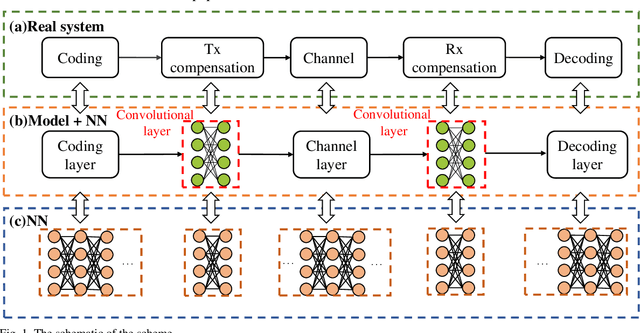
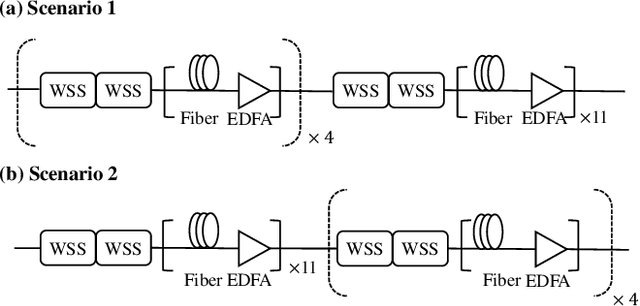
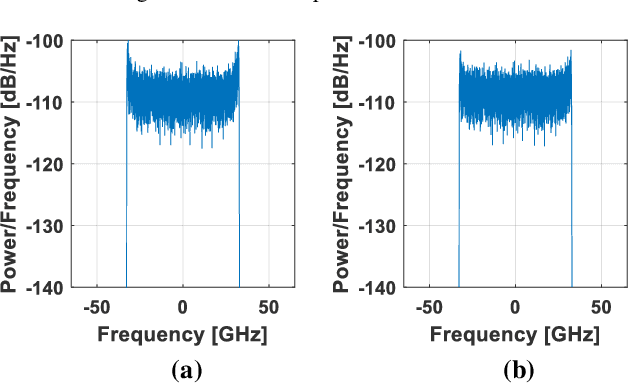
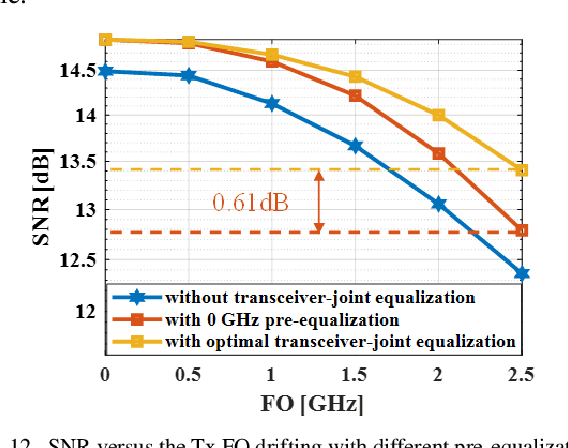
Abstract:In this paper, we propose a scheme that utilizes the optimization ability of artificial intelligence (AI) for optimal transceiver-joint equalization in compensating for the optical filtering impairments caused by wavelength selective switches (WSS). In contrast to adding or replacing a certain module of existing digital signal processing (DSP), we exploit the similarity between a communication system and a neural network (NN). By mapping a communication system to an NN, in which the equalization modules correspond to the convolutional layers and other modules can been regarded as static layers, the optimal transceiver-joint equalization coefficients can be obtained. In particular, the DSP structure of the communication system is not changed. Extensive numerical simulations are performed to validate the performance of the proposed method. For a 65 GBaud 16QAM signal, it can achieve a 0.76 dB gain when the number of WSSs is 16 with a -6 dB bandwidth of 73 GHz.
Low Complexity Component Nonlinear Distortions Mitigation Scheme for Probabilistically Shaped 64-QAM Signals
Dec 21, 2020

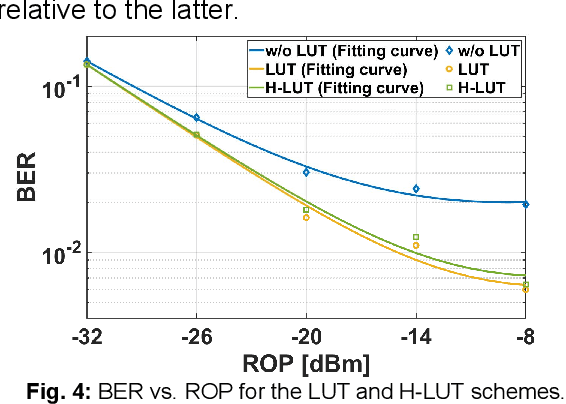
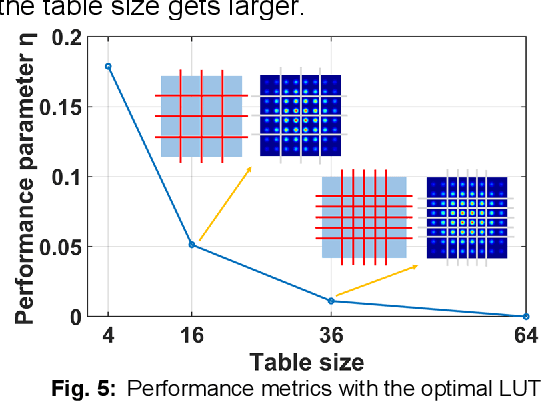
Abstract:We propose a degenerated hierarchical look-up table (DH-LUT) scheme to compensate component nonlinearities. For probabilistically shaped 64-QAM signals, it achieves up to 2-dB SNR improvement, while the size of table is only 8.59% compared to the conventional LUT method.
Application of Machine Learning in Fiber Nonlinearity Modeling and Monitoring for Elastic Optical Networks
Nov 23, 2018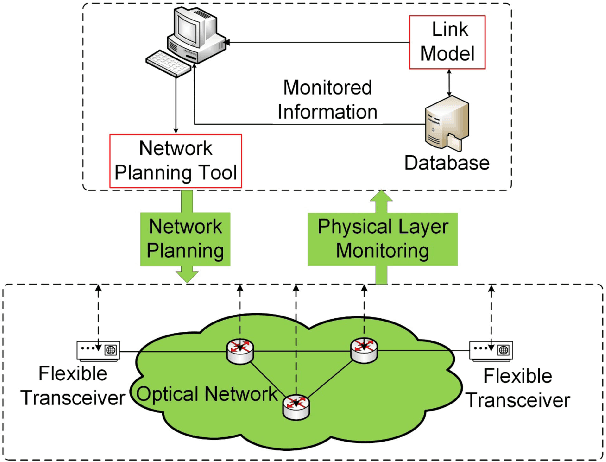
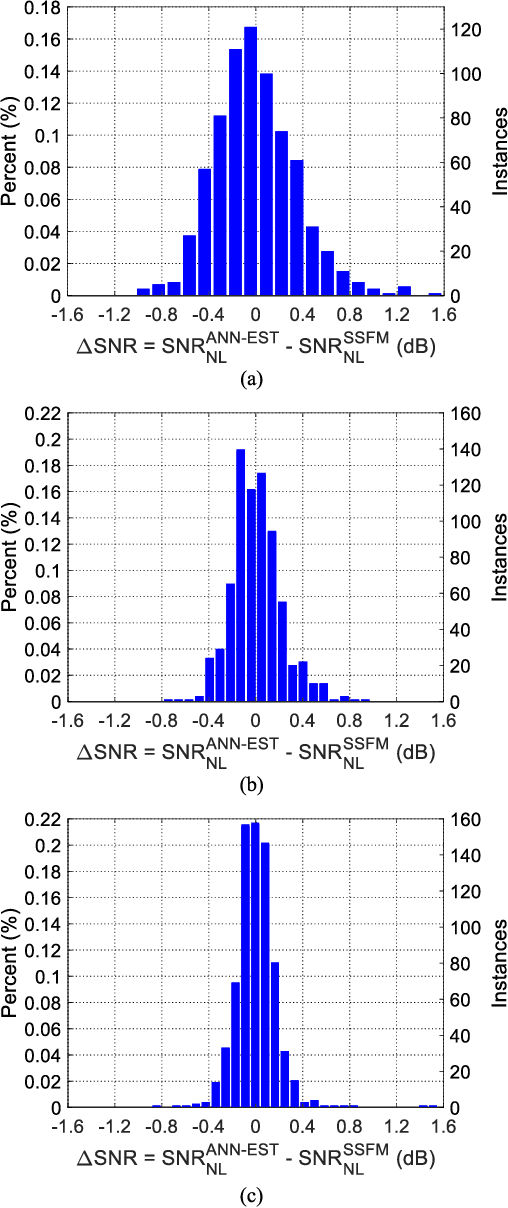
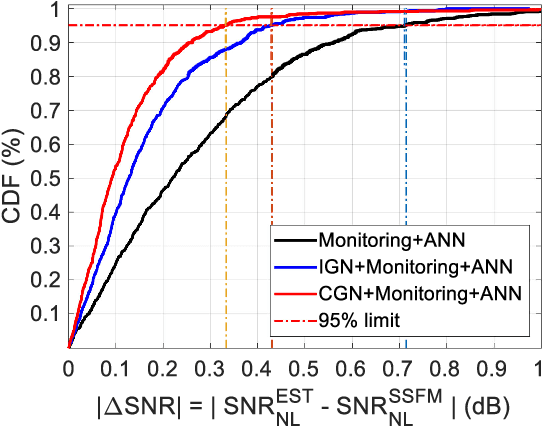
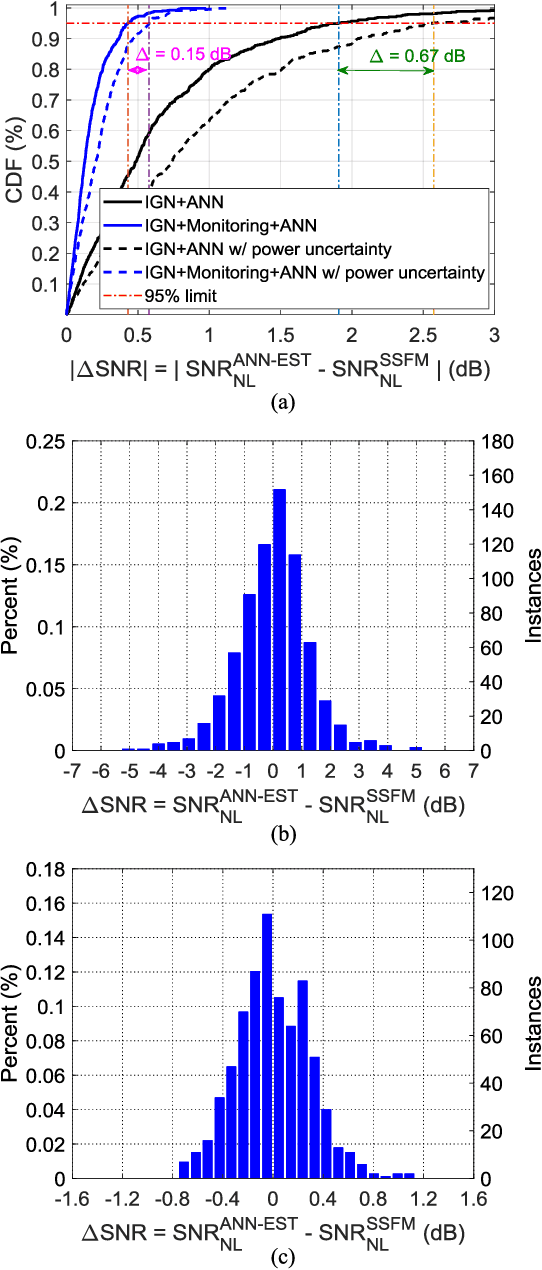
Abstract:Fiber nonlinear interference (NLI) modeling and monitoring are the key building blocks to support elastic optical networks (EONs). In the past, they were normally developed and investigated separately. Moreover, the accuracy of the previously proposed methods still needs to be improved for heterogenous dynamic optical networks. In this paper, we present the application of machine learning (ML) in NLI modeling and monitoring. In particular, we first propose to use ML approaches to calibrate the errors of current fiber nonlinearity models. The Gaussian-noise (GN) model is used as an illustrative example, and significant improvement is demonstrated with the aid of an artificial neural network (ANN). Further, we propose to use ML to combine the modeling and monitoring schemes for a better estimation of NLI variance. Extensive simulations with 1603 links are conducted to evaluate and analyze the performance of various schemes, and the superior performance of the ML-aided combination of modeling and monitoring is demonstrated.
 Add to Chrome
Add to Chrome Add to Firefox
Add to Firefox Add to Edge
Add to Edge